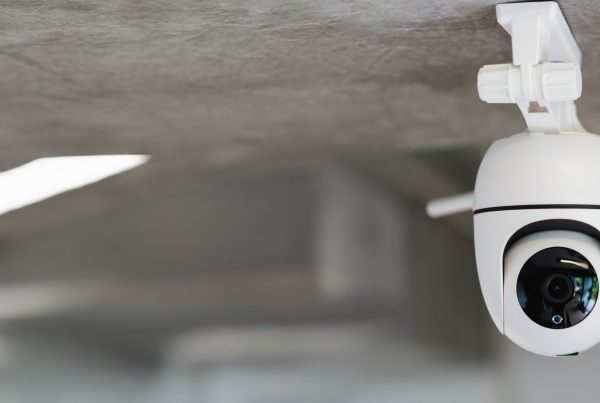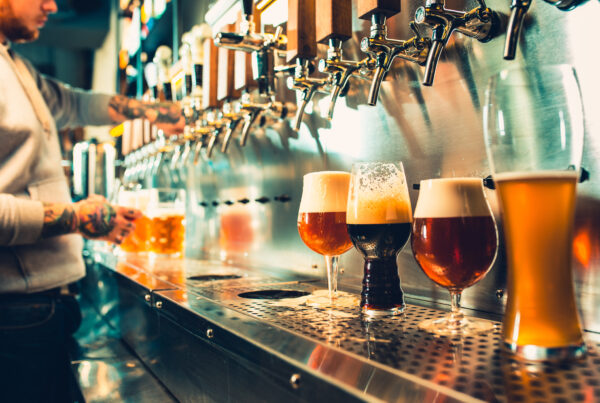1. Make Your Menu More Efficient.
Are your menu items being prepped and cooked as efficiently as possible? Items that need to be thawed for daily food service can be defrosted in a refrigerator overnight instead of under running water reducing energy usage and conserving water. Review your menu to see if there are common ingredients or items that can all come from one source. Minimizing the number of individual deliveries you receive weekly will add to your conservation practices and reduce your delivery expenses as well as receiving time when you can be going in and out of cold storage using additional energy to bring it back to safe temperatures.
2. Switch to energy efficient light bulbs.
Subway recently switched all their light bulbs to energy efficient bulbs in all of their 2000 US franchise locations. Switching to an energy efficient light bulb can save up to $22 per bulb per year. This can add up to quite a savings over time. Also keep lights off when you don’t need them. If you don’t start serving lunch until 11 o’clock there is no reason to turn the dining room lights on until then.
Areas such as walk-in coolers or your dry store room don’t need to be illuminated all day long. Turning off lights as you leave typically unused areas is a great way to save money on your energy bill. Electrical timers can be used in these areas especially if they are commonly forgotten and left on overnight.
Higher efficiency bulbs can be used in areas that require constant lighting. Replace incandescent lights in your walk in cooler with fluorescent or LED lights which produce less heat and consume less energy. Replacing bulbs with higher efficient options will show a lower cost in your monthly bill.
3. Pre-cut and freeze many of the common vegetables you use in your restaurant or cafe.
Onions: Buy in bulk and on sale. Peel and slice or dice. Freeze one layer thick on a cookie sheet. When frozen transfer to plastic jars with screw on lids. Immediately put back in the freezer. Don’t forget to label the jars! When you need some onions in a cooked dish just shake out what you need. If they clump together shake really hard to loosen. Some of the ways we use frozen onions: sautéed or grilled on hamburgers, in omelets, in any dish that the customer asks for “extra onions” that will be cooked or at least heated.
4. Train your staff.
Teach your staff to sort recyclables, turn off lights, and let you know if there is a leaky faucet in the wait station. Ask them to bring in their own take-home containers instead of using the restaurant take-outs.
Busy kitchen staff may often forget to do the simplest of energy efficient steps. Leaving oven doors open releases vast amounts of heat. Each time you open an oven door the temperature can drop by as much as 25o F.; watch the clock and use a timer instead. Don’t leave the convection oven or steamer door open too long or it will just continue to release heat, burning unnecessary energy to retain the proper cooking temperature.
The walk-in cooler is another door that needs to be shut at all times or cooling becomes a continuous energy pit. If doors such as the walk-in cooler are consistently left open, place spring hinges on the doors and it will automatically close, eliminating the opportunity for staff to forget to shut the door.
5. Turn down the thermostat.
You can still be comfortable at 68 degrees rather than 72 degrees.
6. Switch from plastic to glass.
Green restaurants have been following this tip for years. If restaurant uses disposable plates, flatware or cups, considering a onetime investment for china, glass and silver. You will save on garbage (good for the environment as well as the restaurant budget) and save money over time.
7. Reduce Water Consumption
Install low flow faucets and toilets. This will save between 20 to 40 percent of water usage. You can find a list of endorsed products on the official Green Restaurant Association web site. Rather than running hot water over them to loosen dried food, fill a sink and let them soak. Also, only run the dishwasher when it is completely full. This cuts down on water usage, soap and energy costs.
8. Turn It Off.
Just like leaving the lights on in your home, leaving equipment to run idly will cost you hundreds of dollars for unused energy. By turning off your inactive equipment, it saves energy and plenty of cash on your next gas, electric, or water bill. For those times when you forget to turn off equipment after closing, electrical timers can be placed on outlets to automatically flip off equipment when you aren’t around.
Typical equipment left on overnight or during idle kitchen hours are griddles, French tops, ranges, convection ovens, and dish machines. These can all have timers placed between their power outlets and cords to turn them off when you forget.
You can’t turn the whole griddle off, but you can turn off some of the burners during slower business hours. Turn off all the griddle burners except leaving one burner on for off-peak hours. This will save you energy while still keeping kitchen services available.
9. Keep Equipment Properly Maintained.
Keeping equipment properly maintained has valuable cost efficient benefits. Although a habit for some restaurant owners to let equipment run until a major problem arises, having equipment serviced regularly can catch operational problems. Small problems can become high cost issues through poor performance or a need for greater amounts of energy to maintain required temperatures for cooking, or cooling foods. Keeping equipment maintained also helps eliminate break downs that cause down time where you may need to use an inefficient cooking method as an alternative until your equipment is repaired or replaced.
De-lime your steamer regularly to save energy by making your boiler run as efficiently as possible and extending your equipment life.
10. Always Keep Equipment Clean.
Setting up a nightly cleaning routine will help you keep equipment running properly so ranges, ovens, and refrigerators perform at their peak efficiency. Clogged burners, for instance, use more energy to heat and cook food. By unclogging burners, you keep your range using less energy to work at maximum performance.
Gaskets on kitchen ovens become cruddy and build up residue that intrudes on the seal between the rubber and the metal. Allowing outside air to enter the oven requires more energy to keep the oven temperature set. Keep ovens and their doors clean to allow them to heat more efficiently.
Vacuuming refrigerator coils keeps the cooling machinery operating at maximum efficiency. Cleaning coils and keeping dust and materials from building up around them will keep your refrigerator running more efficiently and use less energy.
11. Optimize Equipment Capacity.
Smaller volume kitchens can use smaller capacity equipment. For instance, steaming small portions of vegetables can be done in the microwave instead of a large capacity steamer. When choosing from the variety of product manufacturers and standard size equipment, purchase only the size that you need to maximize output while minimizing energy usage. Large production equipment isn’t needed if the kitchen doesn’t have a high volume of customers.
12. It Pays to Save Money.
Many cities and counties offer energy saving incentives for individuals and corporations who choose to go green. Besides saving hundreds of dollars on your utility bills, you can get money back rebates from the government. To find out more information, visit http://www.energystar.gov or contact your local city government for a list of rebates offered by federal and city governments.
Sources:
http://restaurants.about.com/od/finances/a/Dave_Money.htm
http://www.ehow.com/how_4707662_fresh-vegetables-save-money-restaurant.html




I have always believed in competition among food vendors. Make your food reps battle each other in order to get your business. It was amazing when I found that I was paying $56 dollars for trash can liners and I could get the same liners for $20 from another vendor. When the current vendor lost the liner order, the price was all of a sudden dropped to $19. Food vendors seem to stay competitive on meat and produce but nail you on the items that you may not buy every week or pay too much attention to. I make my vendors work. I give them a blank order guide and have them fill out this weeks prices for me. Lowest bid wins.
One electronic devise that you would like inside your kitchen to keep it clean and neat is a dishwasher. No matter whether you have a enormous or a small kitchen, you’ll choose to have an additional appliance that would still preserve your kitchen in order. A dishwasher that could do this task is a slimline dishwasher. This dishwasher is quite functional, and its constructed narrower so that it can easily fit into small spaces